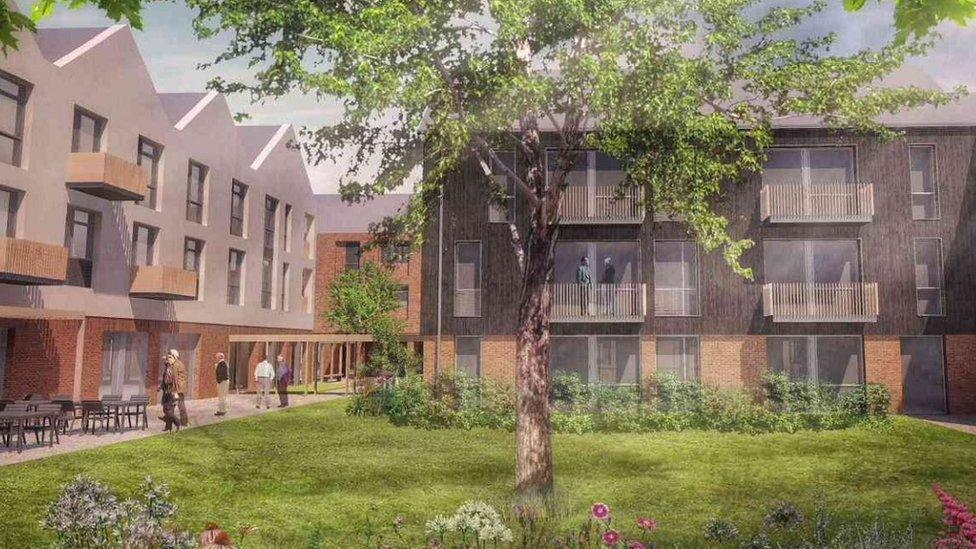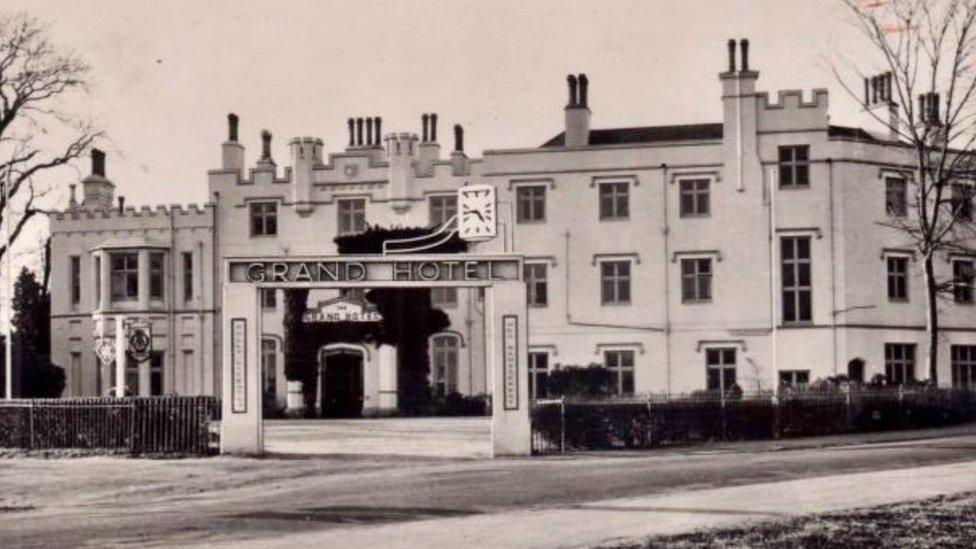Lyndhurst hotel demolition plans sparks row
- Published

The building has been unused since 2014
Campaigners have criticised plans to demolish a New Forest landmark visited by top Victorian society figures to build homes for elderly people.
The Lyndhurst Park Hotel, once linked to smuggling, was visited by Treasure Island author Robert Louis Stevenson.
Developer PegasusLife wants to replace it with 74 pensioner flats.
Opponents insist the unlisted building is historically significant and an influx of elderly residents would put pressure on services in the village.
The plans to be considered by the National Park Authority, external (NPA) are open for consultation until early January.
Originally named, Glasshayes House, the mansion house on the edge of Lyndhurst was built in the early 19th Century as a private home for railway entrepreneur Charles Castleman.
Along with Louis Stevenson, its notable historical guests included Lord Carnarvon of Highclere Castle.
It later became the Grand Hotel, and then the Lyndhurst Park Hotel.

The development would see 74 homes for elderly people as well as 12 holiday lets
PegasusLife plans to replace it with 74 "age restricted ... high quality assisted living" apartments for which it said there was "a very high need" for, along with 12 holiday lets.
Its proposal document states the hotel has "many deficiencies" and "few historic features of particular architectural or historic merit" following development in the 1960s and 70s.
Caroline Wilkins of the Friends of Glasshayes House campaign said it was the "wrong type of development" and the building should be restored.
"It's wrong on many, many levels - it's not needed or wanted. It is easy to take history and heritage for granted - it's up to us to preserve it.
"Any development has to be suitable for young families - finding affordable housing anywhere in the New Forest is very difficult."
She also said the intention to build up to the perimeter of the site would create a "tunnel" effect for air pollution on the high street.
The development is due to be discussed by the NPA on 10 March.

The building first became a hotel early 20th Century